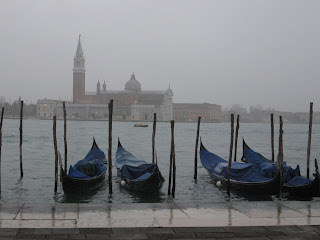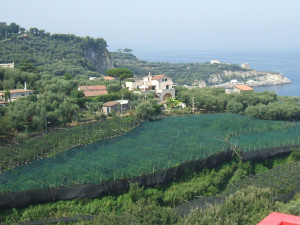Looking out on a beautiful scene from your hotel window in Italy can be an important part of the holiday for many people.
 |
| A view of the Venetian lagoon is worth paying a little extra even in misty November |
Wonderful views have drawn me back to the same hotel in Sorrento each year for the last 20 years. When I stayed there for the first time I arrived late at night with my husband and two young children. When we woke up the following morning to see the fabulous views of the bay of Naples our love affair with the hotel began and we have returned to stay there nearly every summer since.
The hotel, which is at Capo di Sorrento, has a large terrace overlooking the sea with panoramic views that I never tire of looking at.
My favourite view is from the terrace outside my room from where you can see the point of land known as Capo di Massa, which has the remains of a Saracen stone tower on the end where the land meets the sea.
From the dining room, or the terrace outside our room, we enjoy seeing cruise ships going past at night, lit up so they look like glittering diamond necklaces strung out over the sea.
In the mornings we enjoy watching the ferries and hydrofoils crossing from Sorrento to Capri and Ischia, or sailing past Capo di Massa to round Punta Campanella and reach the resorts along the Amalfi coast.
 |
| A view of which I never tire... from the Hotel Dania at Capo di Sorrento |
For example, if you are planning to travel about to other places sightseeing it might be better to book a hotel close to the railway station or bus station rather than in the heart of the centro storico.
Then when you return tired after a long day out you won’t have far to go to get to your hotel in order to shower and change for dinner.
If you are travelling with a car it might be worth considering an out of town hotel with free parking close to the autostrada so that you can get on your way quickly each morning.
Hotels in these types of locations are often modern and specially equipped for business travellers, meaning you will have the benefit of the extra facilities. Also, prices tend to be lower than those charged by hotels in the centre of town that have views of the historic sights.
There are many beautiful things to see in Italy while you are out and about during the day and you don’t necessarily have to be able to see them from your bedroom window.
But whether to be romantic or practical is entirely a matter of personal choice and deciding between a great view and a convenient location can be part of the fun of planning your holiday.
















